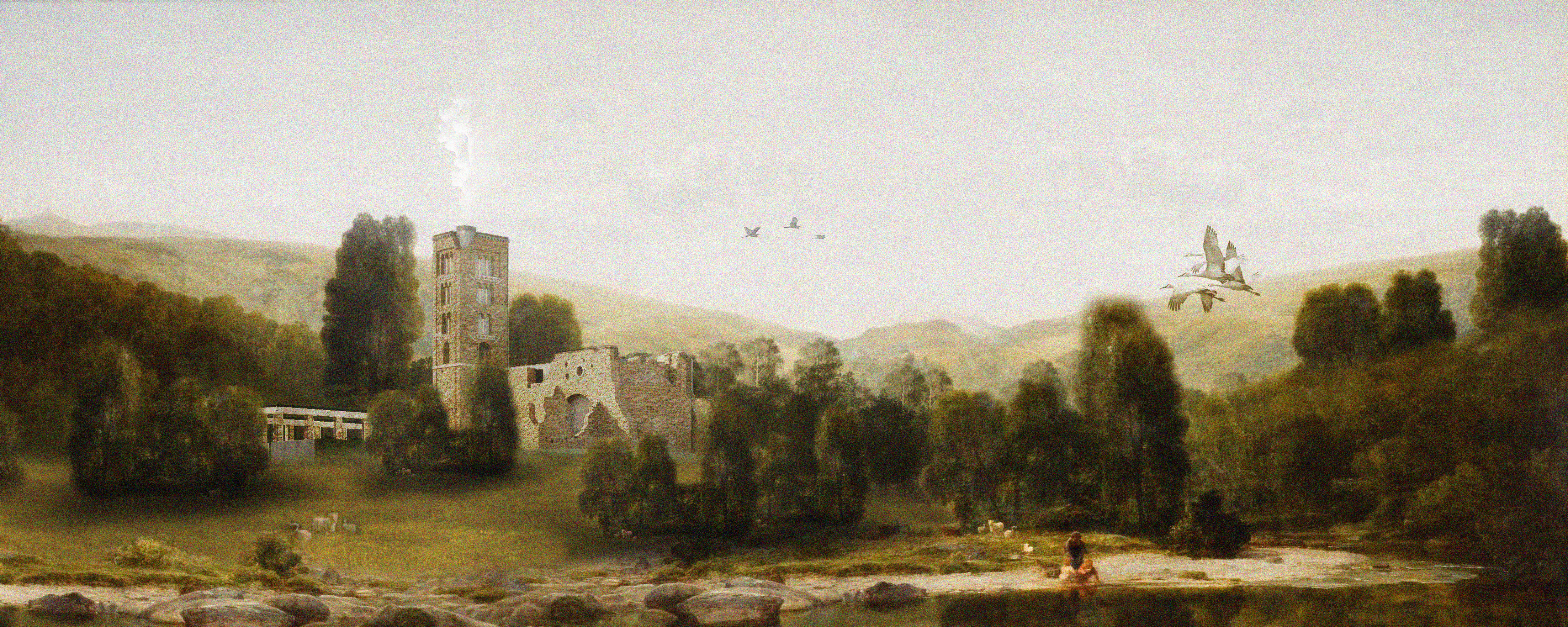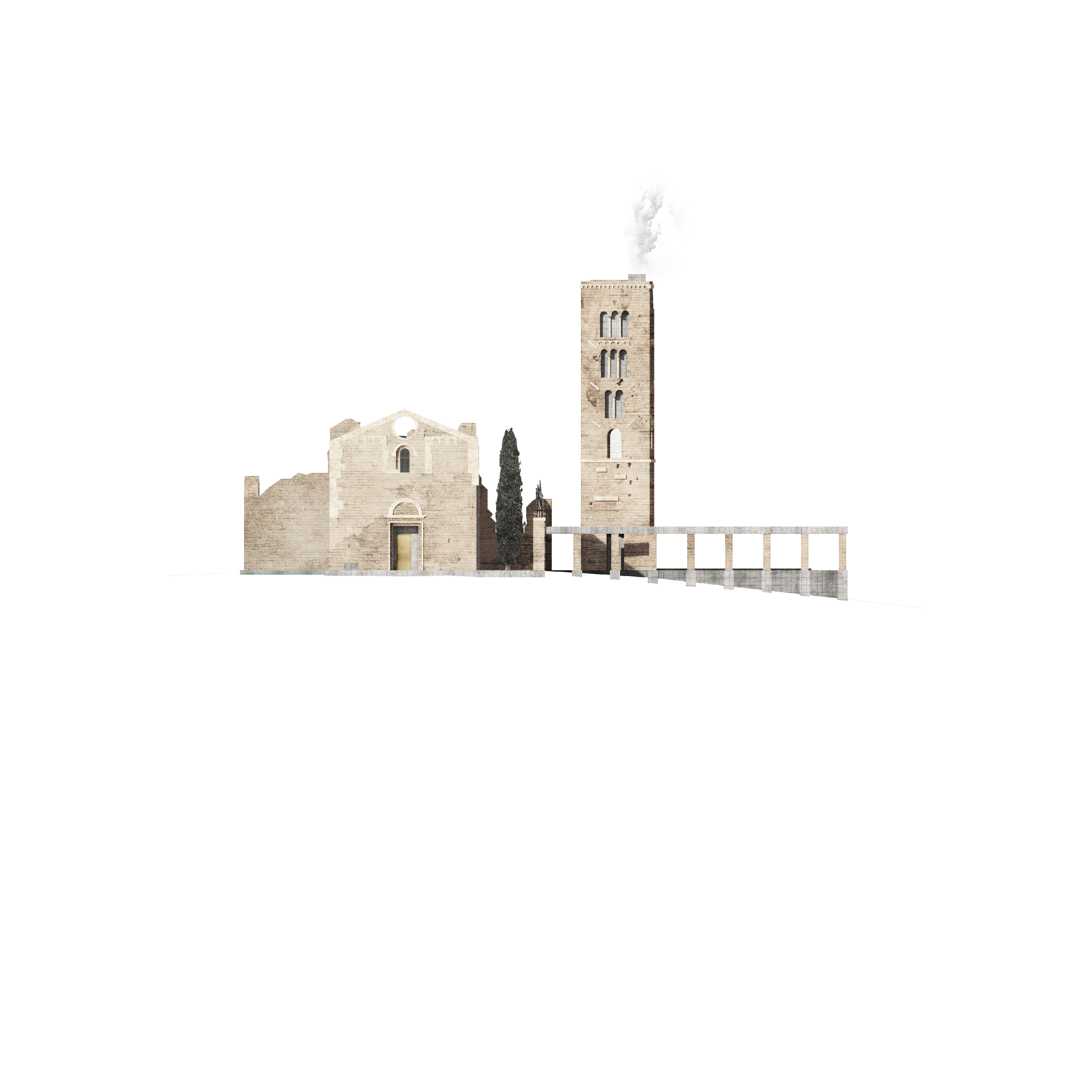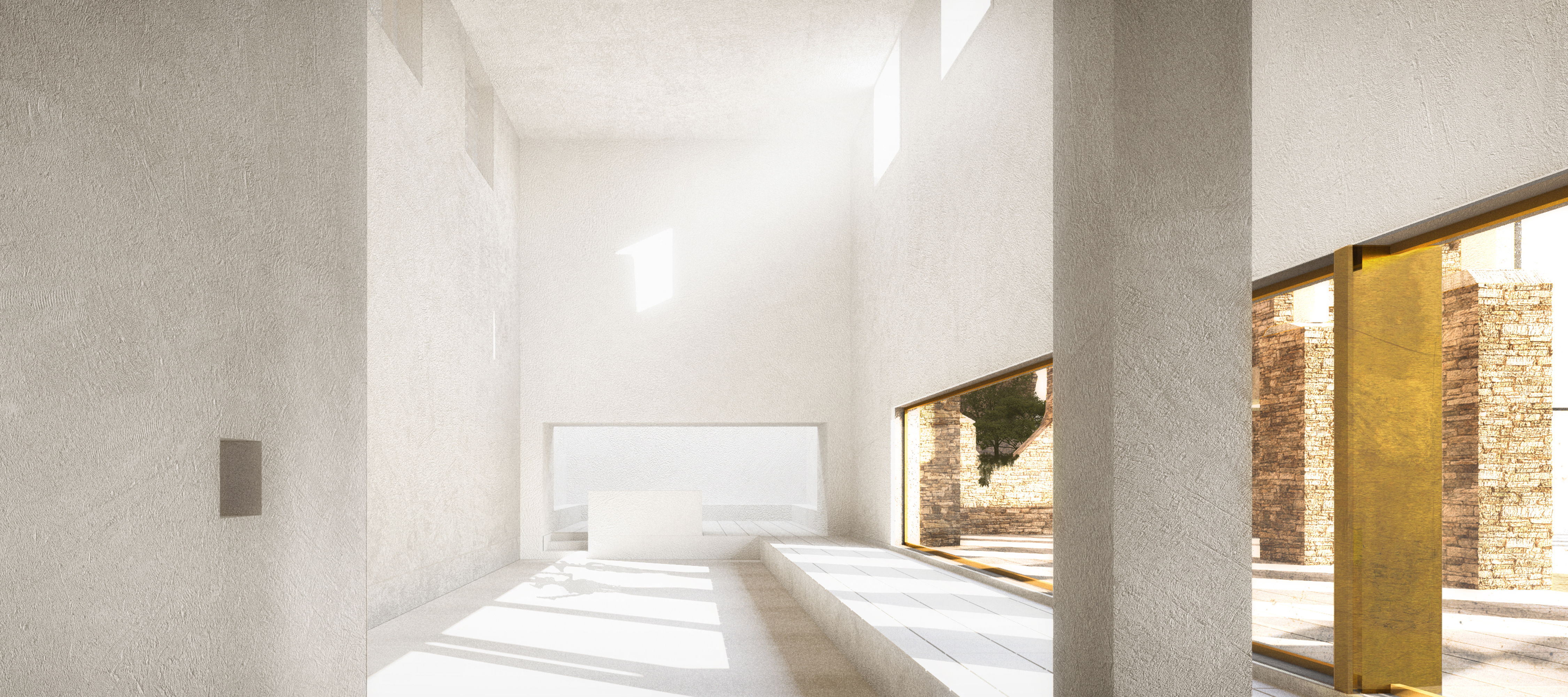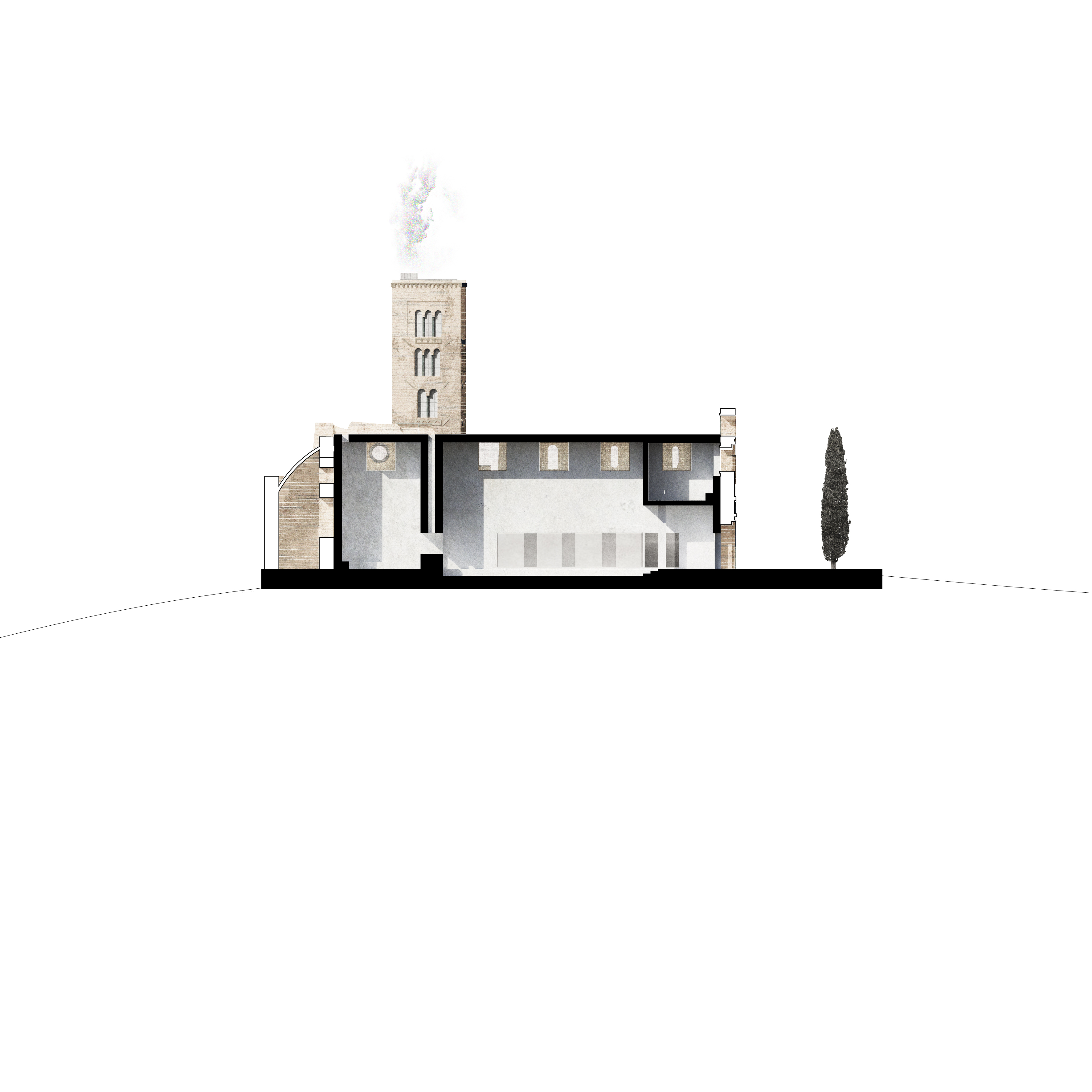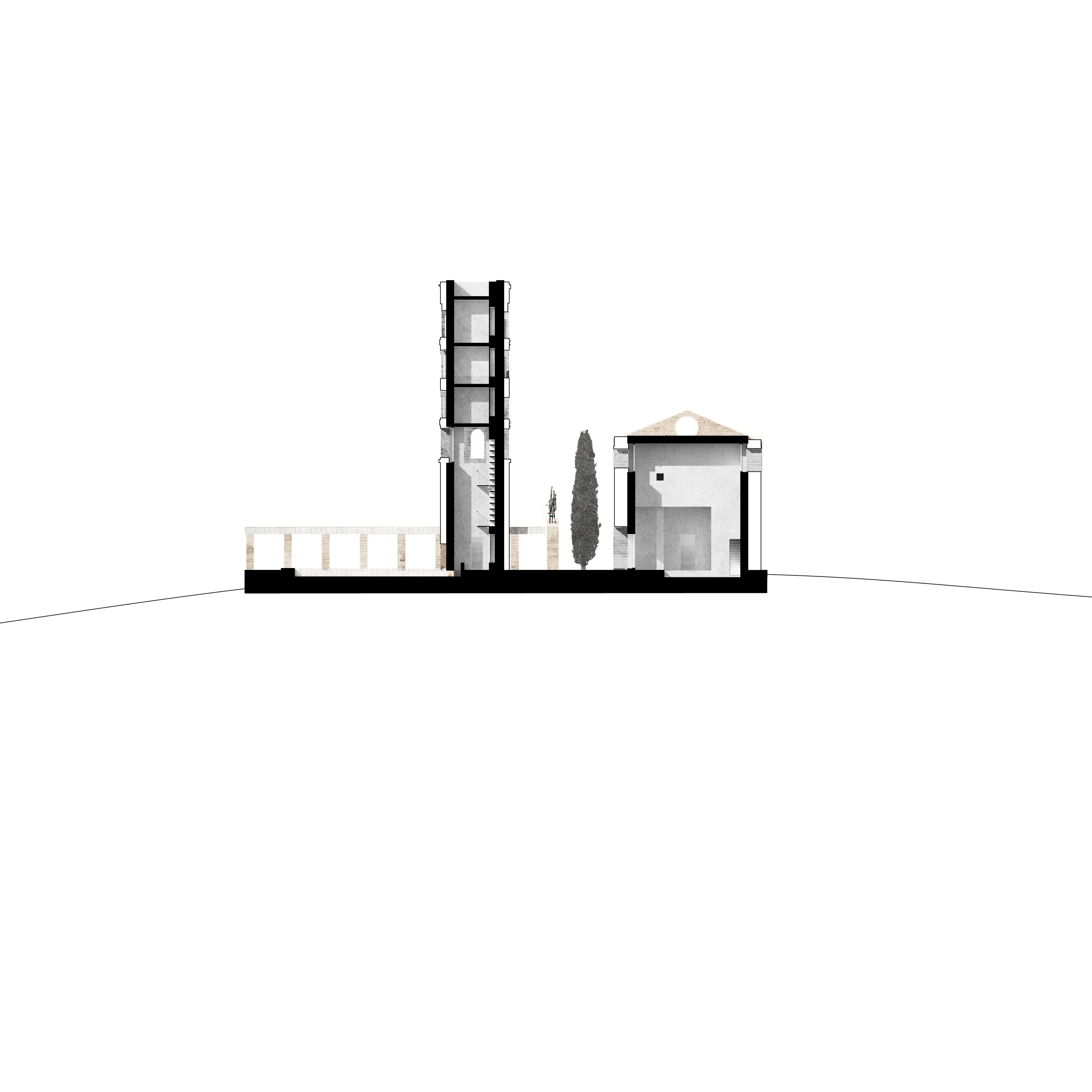MODERNISM CENOTAPH | 2025 | ITA | +Janik Ginter
Modernism is ruinous. It is passé.
‘We have never been modern’ provokes Bruno Latour. Modernism originates in humanism and gives birth to the human being on the one hand and everything non-human on the other. The constitution of modernism separates these actors. At the same time, this separation cannot be maintained. Hybrid beings emerge.
James Lovelock and Lynn Margulis establish a new cosmology by advocating the Gaia hypothesis. Humans do not live (separately from the earth) on the earth, but in the earth and are part of this living organism called Gaia. We would like to erect a monument to this modernity and bury it in a hybrid manner. The design brings together various dichotomies of the ‘new’ on the one hand and the ruinous on the other, which itself becomes a landscape, pairs of built culture and grown landscape of concrete use and generic, of artificial building materials and those that can be returned to the earth without great effort. In a semantic play, modernity characterises the newly formulated interventions in the form of the main volume, which is found in the existing chapel. A second volume fills the tower as a joint and mediator between the plateau and the surrounding spaces. The row of columns emerges from the annex we demolished and forms a low-threshold counterpart as a house for everything non-human and leads off the plateau. The newly poured concrete interlocks with the ruins in an intermingling process - becoming the new support for the ruinous cladding. The twisted and broken parts stage themselves against the orthogonal new buildings. Sobriety and sterility can be found in the interior that formulate a boundary to the exterior, but completely embedded in the rural landscape modernism is to fail persuing the idea of absolute seperation between the human and the nonhuman.
